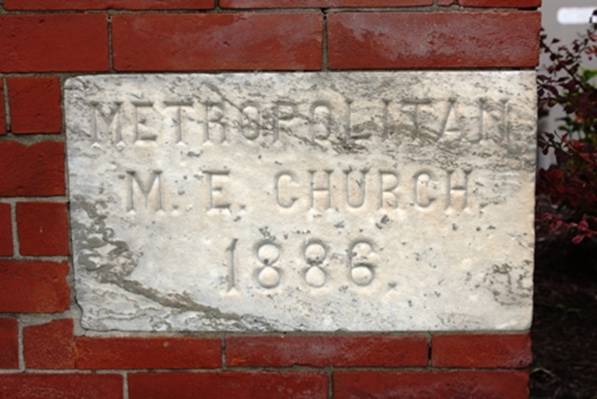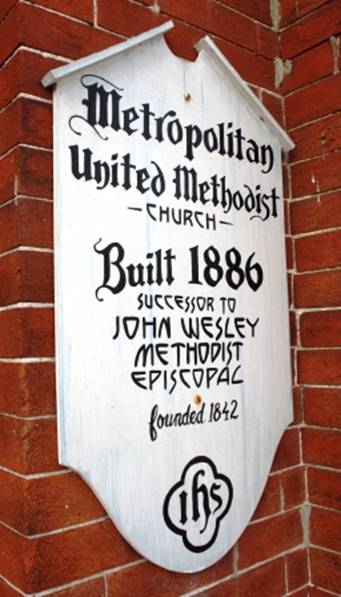
Metropolitan United Methodist Church in Princess Anne and the University of Maryland Eastern Shore have much in common.
On Sunday, Sept. 18, 2011, the church just west of the original entrance to the campus planned a commemorative service acknowledging the 125th anniversary of the start of construction on the simple brick structure a “city block” from the UMES campus.
Many with university ties were expected to attend. The bond the church and the school are intertwined historically.
Blacks in Somerset County, who since 1842 worshipped as a congregation in another locale named for John Wesley, one of the Methodist denomination’s principle founders, laid a cornerstone on Sept. 19, 1886 for a new church on what was then Broad Street.
It also declared the congregation had a new name — Metropolitan — and by proximity, established itself as a neighbor to a fledgling prep school down the hill a short distance away.
Six days before that cornerstone ceremony, nine Black youth showed up at an 18th-century homestead known as Olney in hopes of getting a formal education — thanks to two local pastors and supportive Methodist Episcopal colleagues in Baltimore.
The Delaware Conference Academy, UMES’ first name, was open for business due in no small part to Metropolitan’s minister at the time, the Rev. Joseph R.S. Waters , who was born in nearby Fairmount, Md.
The Somerset County native partnered with John A. B. Wilson , a white Methodist minister from Delaware, to win the support of church elders to open a secondary school on Maryland’s rural Eastern Shore.
The bitterly divisive Civil War had been over for two decades, but the nation wrestled with its aftermath, which included the moral obligation to provide descendents of former slaves and freedmen access to education. Somerset County was not immune from these pressures.
It is no less short of remarkable that a Methodist preacher and his colleague launched a small, poorly funded enterprise in hopes it might prop open the door for opportunity to that pioneering first class and those that would follow.

While the Black branch of the Methodist Episcopal denomination was committed to supporting the modest Academy in far away Princess Anne adjacent to its church, early struggles were difficult.
Nonetheless, UMES’ heritage in its early years as a private, church-supported school that became a public university is directly tied to Metropolitan.
Academy teachers expected students to attend services there, a tradition that carried over well into the 20th century when the school became a public institution.
UMES’ Gospel Choir is known for doing just what its name declares –- singing gospel songs like those in the hymnals found in Metropolitan’s pews.
As Metropolitan historian Thomas Tilghman pointed out, the church’s membership rolls included the names of many UMES alumni and employees past and present. Its pastor at the time of the 125th anniversary, the Rev. Darlene Dixon, is a frequent participant in formal UMES functions and is widely viewed as the unofficial campus chaplain.
It is a relationship that has endured the test of time, and makes both institutions proud.

